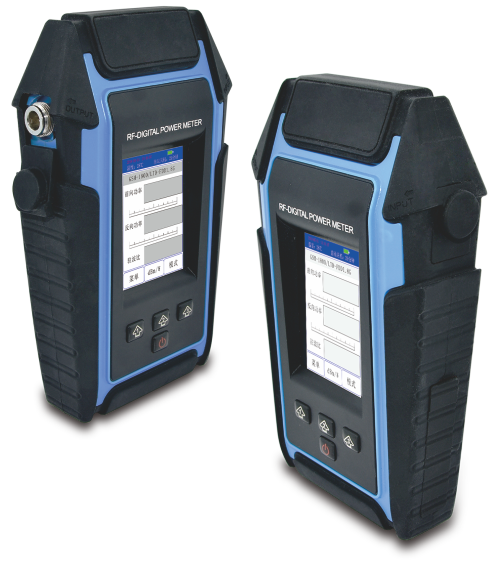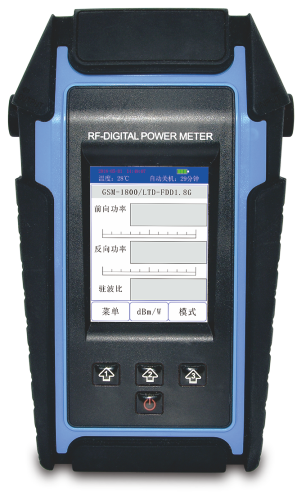





4G/5G indoor distributed unit test kit
Keywords:
Category:
 Product Introduction
Product Introduction
The TQ series 4G indoor distributed test kit is a compact, lightweight, and versatile testing instrument, mainly used for testing radio frequency power meters. This manual will guide you through the setup and use of the TQ series 4G indoor distributed test system.
Software Copyright Registration No.: 2017SR265232 / 2017SR270057
Main Application Scenarios
| The inherent structural complexity of indoor distributed networks often renders existing testing methods ineffective, a phenomenon even more pronounced in 4G/5G system detection and maintenance. Common reasons include: |
| A. 4G/5G employs intelligent transmit power control, resulting in significant power fluctuations in the link, causing difficulties in power verification during system acceptance testing; |
| B. The power changes significantly from the transmitter (e.g., RRU) output to the antenna end. Typical systems involve changes from watts to milliwatts, and in case of failure, it may even drop below milliwatts. Existing power meters can only measure tens of milliwatts, and although terminal power meters have a wider dynamic range, they cannot perform real-time online measurements; |
| C. Due to the numerous link values, it is impossible to use an antenna and feeder testing instrument for fault location or component detection during troubleshooting; |
| D. 4G LET-TDD/5G uses an uplink and downlink co-frequency output mode. When the link exhibits an imbalance between uplink and downlink, spectrum analyzers or field strength meters cannot distinguish the transmission direction of the measured signal; |
| E. 4G/5G occupies multiple frequency bands with wide frequency band coverage (1800~2700MHz). When intermodulation interference occurs in the link, although a three-order intermodulation instrument can be used for testing, it is usually only suitable for a single frequency band and cannot cover the entire network bandwidth. |
Shenzhen Tongqi Communication's indoor distributed test kit is a pioneering, complete radio frequency measurement system. This system not only solves many challenging indoor distributed network testing problems, but also boasts simplicity, flexibility, and efficiency.
 Product Suit Features
Product Suit Features
| TQ-1200A | |
 | Dual-ended, highly stable adjustable output Provides highly stable output, with main output power up to 31dBm, minimum -10dBm, high spectral purity, especially suitable for monitoring various amplification and transmission links. |
Dual ultra-wideband design, preset frequency points Continuously adjustable from 300MHz to 3000MHz, covering most mobile communication frequency bands. 10 commonly used test frequency bands are preset, common frequency points can be set according to user requirements, and frequencies can be customized. | |
High-efficiency testing, scanning testing No warm-up or calibration process is required. Compared with other terminal equipment (such as network analyzers, antenna test instruments, etc.), the test time is greatly shortened, and it supports uninterrupted emission of stable signals at different frequencies to assist testing. | |
| TQ-3200A (Left) / TQ-3200B (Right) | |
 | Ultra-high dynamic range The combined power measurement range is up to 70dB (-20dBm~+50dBm), with an overlapping range of up to 20dB |
High-precision measurement Through calibration of specific frequency bands, and optimization of return loss and directivity, etc., the accuracy of power measurement is ensured in multiple aspects. | |
Dynamic power correction When checking or spot-checking link power, power simulation can be performed at any time for different transmitters or remote units (RU). | |
Long-term online monitoring When the transmitting system encounters soft faults such as power jitter or drift, fault location can be achieved through online detection and data analysis over a period of time. This is currently the only through-type power meter that can achieve completely independent long-term online detection without relying on any other equipment or instruments. | |
High-reliability design In case of input-output misconnection during use, it will not be damaged, but will prompt through the display screen and audio signal. Even permanent misconnection will not damage the instrument. | |
Intelligent The instrument automatically enters the test state with only the correct frequency band information. During the test, the display mode can be switched at will, and various parameters can be monitored in real time. | |
| TQ-3400A | |
 | Full-band scan It can identify which frequency band signals are mixed in a mixed signal of 2G/3G/4G. The instrument's default frequency range and name can be customized. |
Clear and concise power values Visual interface, connecting the tested feeder line can immediately know the current forward power value, and classify according to frequency, the power value results are clear, easy to understand, and the equipment operation is simple and intuitive. | |
Optimized design for indoor distributed systems It can accurately locate frequency band faults, especially for the wireless small signal test function of the uplink channel. It is suitable for the construction and maintenance of communication fields such as telecommunications, broadcasting, railways, power, and military, as well as teaching and research in scientific research institutes. | |
 Some parameters
Some parameters
Milliwatt Power Meter TQ-3200A | Watt Power Meter TQ-3200B | |
| Meter Form | Integrated | |
| Frequency Range | 700MHz - 3GHz | |
| 4G Compatibility | 2G, 3G, 4G (LTE-FDD/LTE-TDD) | |
| Power Range | 0.001mW - 1300mW | 0.001 - 160W |
| Correction Factor | 0.1 - 10 | 1 - 100 |
| Maximum Input Power | 500W | |
| Display Resolution | 0.01dB or 0.001mW | 0.001dB or 0.001W |
| Measurement Mode | True Average/Peak/Burst Average | |
| Measurement Accuracy | +/-3% +/-5μW (+15 - +35℃) +/-6% +/-5μW (0 - 50℃) | +/-3% +/-5mW (+15 - +35℃) +/-6% +/-5mW (0 - 50℃) |
| Standing Wave Ratio Measurement Range | 1.05 - 40.0 | |
| Insertion Loss | < 0.05dB | |
| Insertion VSWR | < 1.10 | |
| Directivity | > 30dB | |
| Peak-to-Average Ratio | > 10dB | |
| Burst Pulse Width | 150μs - 4s | |
| Burst Pulse Frequency | 0.25Hz - 1000Hz | |
| Burst Pulse Duty Cycle | 0.1% - 100% | |
| CCDF Display Mode | Comparative Curve | |
| Rated Impedance | 50Ω | |
| RF Connector | N-type (female) | |
| Auto Power Off Time | Optional | |
| Internal Data Storage | 150 files | |
| Long-Term Monitoring Duration | 50 days | |
| Internal Power Supply | High Reliability Lithium Ion Battery | |
| Continuous Operating Time | More than 8 hours | |
| External Power Supply | 12.6V/1A DC | |
| Computer Interface | USB | |
| Operating Temperature | -10 - +50℃ (Relative Humidity <95%) | |
| Storage Temperature | -20 - +50℃ (Relative Humidity <70%) | |
| Operating Altitude | 5000m | |
| Storage Altitude | 14000m | |
| ESD Withstanding Voltage | >8KV | |
| External Dimensions | 200mm*120mm*50mm | |
| Weight | 800g | |
Contact technical or sales person for consultation.
Consulting hotline:
After receiving your message and information, our sales or technical personnel will contact you.
Your information will be kept confidential;
Some products can be customized according to your needs.
Related Products
View more solutions
The cleanliness of the fiber optic end face directly affects the quality of optical signal transmission. Pollutants such as dust, oil, and water vapor can cause signal attenuation, increased reflection, and even signal interruption. Regularly cleaning and maintaining the fiber optic end face is crucial for ensuring the stable operation of the fiber optic communication system.
In the digital age, optical network equipment, as a key infrastructure for information transmission, plays a vital role in ensuring the smooth operation of various services. A complete and efficient detection and maintenance scheme can promptly identify and resolve potential equipment issues, improving network performance and reducing the risk of failures.
Ensure the continuous and stable operation of government and enterprise operation/5G network operation equipment, providing high-quality 5G network services to government and enterprise customers and guaranteeing the normal operation of various businesses. Through scientific and standardized maintenance management, reduce equipment failure rates, improve network performance and reliability, and promptly respond to and resolve problems encountered during equipment operation.




